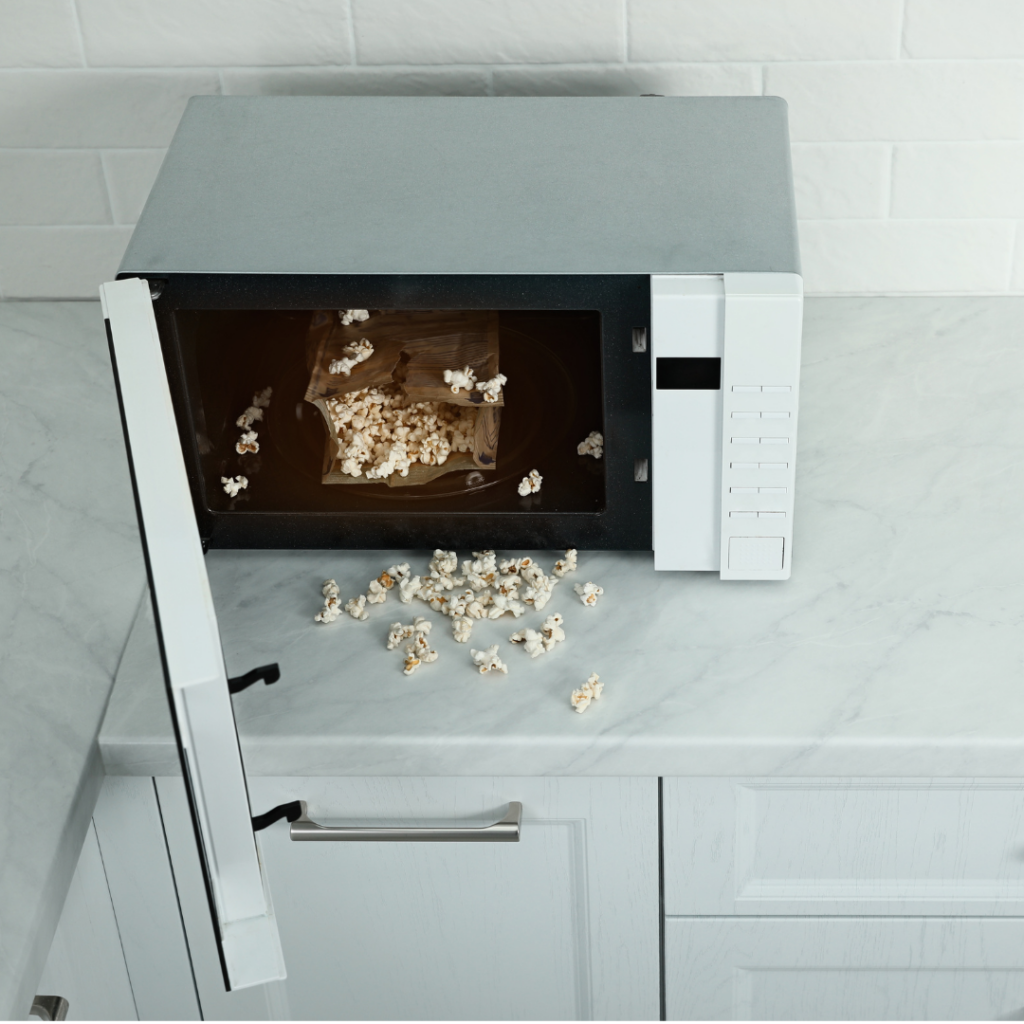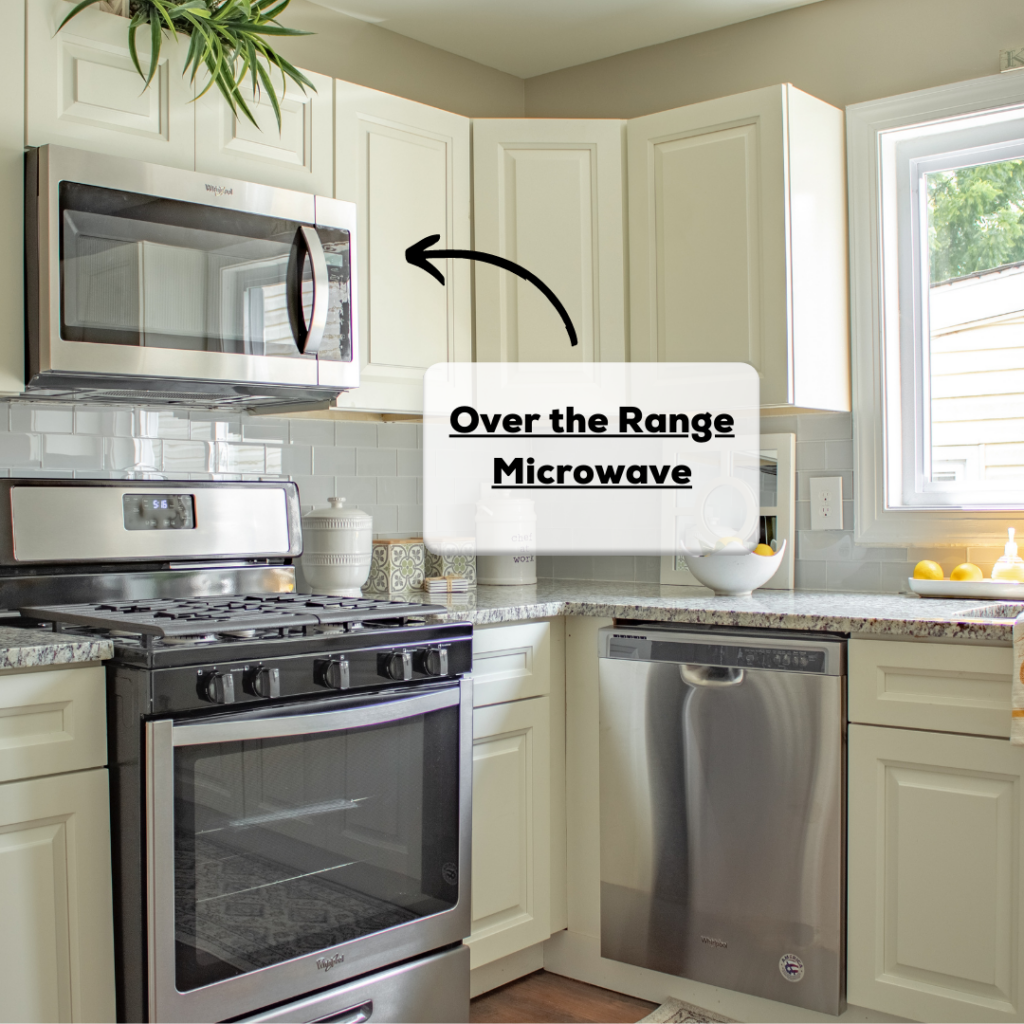Do Microwaves Need Ventilation? (Countertop and Over the Range)
In modern kitchen designs, one of the major priorities is to maximize the available space. In many cases, this means hiding a range of appliances in various places to keep the kitchen clean and appealing. But not all appliances are able to be tucked away. Some of them require proper ventilation. Microwaves may be one example of this type of appliance. So do microwaves need ventilation? And if so, why?
In most kitchens, you’ll find microwave ovens tucked away in the wall or cabinet. Sometimes, however, you might simply find them sitting on the countertop. But microwaves should really have enough space to properly ventilate for both safety and efficiency.
In this article, we’ll discuss the reasons you should find a nice, open space to place your microwave and what the consequences of failing to do so may entail. Read on to learn more!

Do microwaves need to be vented?
Yes, microwaves need to be vented but it is important to explain an important distinction here.
Every microwave needs a way to vent excess heat from the unit itself to keep internal components cool and in working order, but they don’t necessarily have to be vented outside. If a microwave vents air into the kitchen or other area of the home, you will likely smell the cooked food throughout the space.
Venting the microwave outside, on the other hand, will dramatically reduce the amount of food odor that lingers inside the house.
Don’t forget that microwaves are cooking appliances that generate large amounts of heat when in use. A failure to properly vent your microwave could create a serious safety concern, as well as interrupt the efficiency of the microwave.
Because there are various types of microwaves on the market, there may be different venting strategies that you’ll have to use depending on the brand of the microwave. Some microwaves boast effective built-in microwave ventilation systems, while others don’t. The differences between the ventilation required for a countertop microwave and a microwave with a range hood vary dramatically.
If your microwave doesn’t have an effective built-in ventilation system, you may have to find a way to vent the microwave yourself. Failure to do so would compromise the appliance’s efficiency.
The most effective way to do this is to ensure there’s proper clearance around your microwave oven.
A blocked vent can cause the appliance to overheat. And when that happens, you could run into some electrical problems with your microwave. It could even create an unsafe situation, as an overheating microwave may become a fire hazard.
A Handy Tip: Built-in microwaves pull air from under the appliance and push the air out via the ventilation slots in the back and sides of the device.
As long as you don’t block the back, sides, and top, where the microwave sucks the air from and pushes it out, then everything will be fine.
Microwaves that need the most venting are the ones that have exhaust fan units mounted on top of them. The fan serves as the exhaust for both the microwave and the stove underneath and must be vented to function properly.
Let’s go deeper into the reason ventilation is crucial to microwave ovens. Keep reading!
Why do microwaves need ventilation?
Microwaves need ventilation for two simple reasons – safety and efficiency. We all know that microwaves generate heat while cooking. You’ll notice that if you touch the body of your microwave while it is in use, it emits heat waves
Let’s explain how a microwave oven cooks food.
When turned on, the heat produced by the microwave oven causes water and food particles to vibrate.
The appliance’s vibration produces more heat, which cooks the food. As the food gets cooked, the air within the microwave starts expanding.
This hot air needs to escape from the appliance. Otherwise, its efficiency may decrease, or the microwave might even overheat and become damaged.
Manufacturers usually stress the importance of proper ventilation for their microwaves. They know how poor ventilation could drastically affect the device’s lifespan and efficiency.
Don’t just place a microwave oven in a cramped area.
Now you may be wondering, “So how do I know the microwave ventilation requirements for my device?” You can check the manufacturer’s manual to know the exact clearance recommended for the microwave brand.
A Handy Tip: Always check the manual before installing a microwave oven, and be sure to follow the minimum clearance recommended and actual ventilation needs, as stated by the manufacturer.
Does a countertop microwave need ventilation?
Adequate ventilation is essential for the countertop microwave. Proper ventilation allows the appliance to function correctly.
So, yes, countertop microwaves require internal ventilation, but not external ventilation.
The primary thing you need to do is ensure proper clearance at the sides, rear, and top of the microwave. And make sure the vent at the bottom isn’t blocked.
On the top, allow 3 inches of clearance, 3 inches on both sides, and 3 inches at the rear. This is usually acceptable for a countertop microwave.
These microwaves are designed to stay on top of the countertop, so they have to be vented differently. On these devices, you’ll find the vents at the top or sides of the appliance.
A Handy Tip: Built-in microwave model’s vents are located at the rear, while the countertop microwaves have their vents located on top or sides of the device.

Does an over-the-range microwave need to be vented?
An “Over The Range” microwave (OTR) is a microwave that’s mounted into a wall or cabinet and sits over a stove. These microwaves require the most ventilation, as they have to divert heat coming from other appliances like the stove, as well as the heat they’re producing internally. Usually, however, these appliances come with an internal exhaust fan and may be built into a hood which is designed to move hot air away from the appliances.
There are a couple of over-the-range microwave venting options. One of them is the internal exhaust fan mentioned above. This internal exhaust fan helps prevent the appliance from overheating.
Its principal function is to channel the hot air away from the appliance. It can also recirculate the air and release it back into the kitchen.
Another way to vent a built-in microwave, such as the OTR, is to link its ventilation system to an external vent.
So, OTR microwave ovens either utilize a recirculation or external ventilation system to get rid of steam, smoke, and odor from the kitchen.
A Handy Tip: A built-in microwave using a recirculation vent system pulls the air through a charcoal filter before venting it back into the house. You can also install an external vent.

Charcoal filter vs. external ventilation system
A charcoal filter is a ventilation tool you can buy for your OTR microwave if the system is set up to vent into the home.
Some OTR microwave systems don’t have the capability to be vented outside because of the placement of the appliance. In this case, you may want to purchase a charcoal filter, as it will filter all of the air that’s vented from your microwave, removing powerful odors before allowing them to vent into your kitchen.
On the other hand, an external ventilation system will do as the name suggests; it will vent the air out of the house. This removes the problem altogether, as the odors that might be pumped back into the kitchen are redirected outside. Many of these systems remove odors by venting a microwave through the roof.
Do convection microwaves need to be vented?
The simple answer is “No.”
You don’t need to externally vent convection microwaves. Why? The reason is that these microwaves use a fan for air circulation within the appliance.
The air circulation has a massive impact, as it causes the microwave to heat up and cook food items faster.
However, proper clearance is essential around the convection microwave. If you make sure this is taken care of, there’s really no need to provide any additional ventilation for the microwave.
Commercial convection microwaves might be a different story, however. Make sure to check the installation manual for more information.
How much ventilation does a microwave need?
Manufacturers usually state the minimum clearance required when installing a microwave. So, you can check the product’s manual to know the requirement written there.
The usual requirement is to ensure 3 inches of space is maintained on all four sides. These include the rear, top, and two sides.
Ensure nothing blocks the air vent during operation. Otherwise, you could experience heat build-up, which might cause machine failure or damage.
Summary of microwave oven venting
Do microwaves need ventilation?
Yes, they do. Venting a microwave has a range of benefits. It can help remove airborne toxins, grease, and odors. It can also help keep the kitchen space cool during hot summer periods and more.
However, when mounting microwave ovens, ensure adequate clearance on all sides of the appliance. You can check the manufacturer’s manual to know the clearance required and the venting needs of the microwave before commencing the installation process.
Let Us Know How We’re Doing!
Did this expertly prepared resource answer your question?
Do you have another question about home maintenance, home improvement projects, home appliance repair, or something else?
Get more information, send in questions and keep the discussion going by contacting the I’ll Just Fix It Myself company customer service team at at 1-800-928-1490 or Email us at [email protected]
